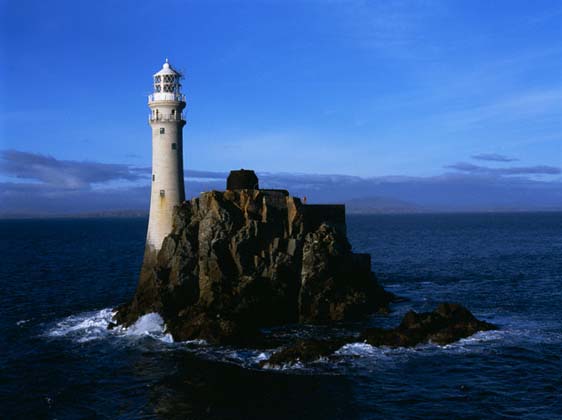The Rolex Fastnet Race is one of the most tactically demanding of the world’s classic offshore races. Navigator Hugh Agnew breaks down the race strategy
One of the world’s classic offshore races, the Rolex Fastnet Race is also one of the most tactically demanding. Multiple tidal gates and the notorious British weather are just two of the major factors that can play a big part in your final result. Getting your race strategy right means doing your homework.
Expert navigator Hugh Agnew has lost count of the number of Fastnet Races he has completed, but takes a guess at 12. Of all these experiences, helping Leopard to a new course record in 2007 is his favourite. This is his advice for the course, from the start in the Solent:
Channel strategy
It is unforgivable not to have pre-planned this stage. By considering the expected weather and tide conditions for the next 24 hours, you will be able to decide whether you will reach Portland Bill with the tide or after it has turned against you.
Portland Bill
The first major tide gate and critical one. It’s crucial to plan early for this. If there’s any chance you won’t make the tidal gate easily, aim to pass well offshore. Tidal chart atlas NP257 is a must. If the tide’s with you, you will be squirted westwards if you pass close, but if you miss the tide, your tacking angle will suffer dramatically by staying in the strong tide. The true wind speed and direction will also change. Don’t believe the stories about the inside passage; it rarely works, if ever.
Portland Bill – report position to RORC [check SIs and amendments specific to your race year]
Lyme Bay
With east-going tide, stay north of rhumb line. As the sea breeze decays, you are in good shape to benefit from a land breeze, but if you want to hug the coast remember it’s a long way round.
Start Point
Tdal gate 2. Although it’s important to pick your spot depending on whether the tide is with or against you, the tides are generally weaker here. Having said that, don’t pass close if the tide’s against. You don’t have to go too far offshore to avoid the race.
Start Point – report position to RORC
Continues below…
Iconic Fastnet headlands that can make or break your race – and how to round them
There are three major headlands on the Rolex Fastnet Race route that are key to the success or otherwise of your…
What does it take to win the Rolex Fastnet Race? We find out from four former winners
As the world’s largest and most notorious offshore, the Rolex Fastnet Race, has gained in popularity, so the competitiveness of the…
Blog: What it’s really like to sail in the Rolex Fastnet Race double-handed
It is over. We crossed the finish line at 21:09 last night coming in 17th in double handed class and…
Lizard
Difficult to plan for this one until you get closer therefore judge as you approach. Again, tide can be a major issue. But it’s a high risk strategy to try to get in among the rocks to get out of the tide. If the tide is against you it’s better to stay well offshore.
Lizard Point – report position to RORC
Mounts Bay
Follow rhumb line to Runnel Stone, there’s usually little reason to hug the shore. Beware of the high Cornish cliffs which can influence the breeze and provide wind holes and traps.
Celtic Sea
Not too many options, but generally stay to the south of the rhumb line as any new weather is most likely to come from here and you’ll benefit first.
Fastnet Rock
Often tide against you here as you head for Pantaenius mark. Try to anticipate this.
Fastnet Rock – Report position to RORC (‘Ocean Six’ VHF72)
Pantaenius 51º 17.02’N 09º 41.04’W. This is a steel special mark yellow buoy with X top mark and radar reflector light Fl. Y. 3 secs.
Return leg
Traditionally a broad reach. Again keep south of rhumb line, especially as you nearly always get headed on the approach to Bishop Rock. Don’t get caught to the north and pinned to the Isles of Scilly. A great way to lose places fast!
The finish
Notorious place to mess up a good race! Penlee Point and Rame Head are classic windless holes. If in any doubt about the reliability of the breeze, approach from the south. Use binoculars and if possible log onto competitor trackers to see what’s happening ahead. In addition, use local weather stations and METARS to establish wind conditions. This may be a time to have someone up the rig.
Hugh Agnew is a professional oceanographer and hydrographer.
1985 Part of the team that conceived the original Yeoman navigation technology
1993-2002 Chief executive of the Yeoman Group
1996 Vice-president of the Royal Institute of Navigation
1977 First Fastnet in Noryema
1979 Second race aboard replacement Noryema
1990s Competed in all Fastnets. Raced aboard Ocean Leopard and Longobarda
1998 Aera, won overall in Sydney-Hobart
2007 New course record aboard ICAP Leopard 3 – 1d 20h 18m. Average speed 13.72 knots









